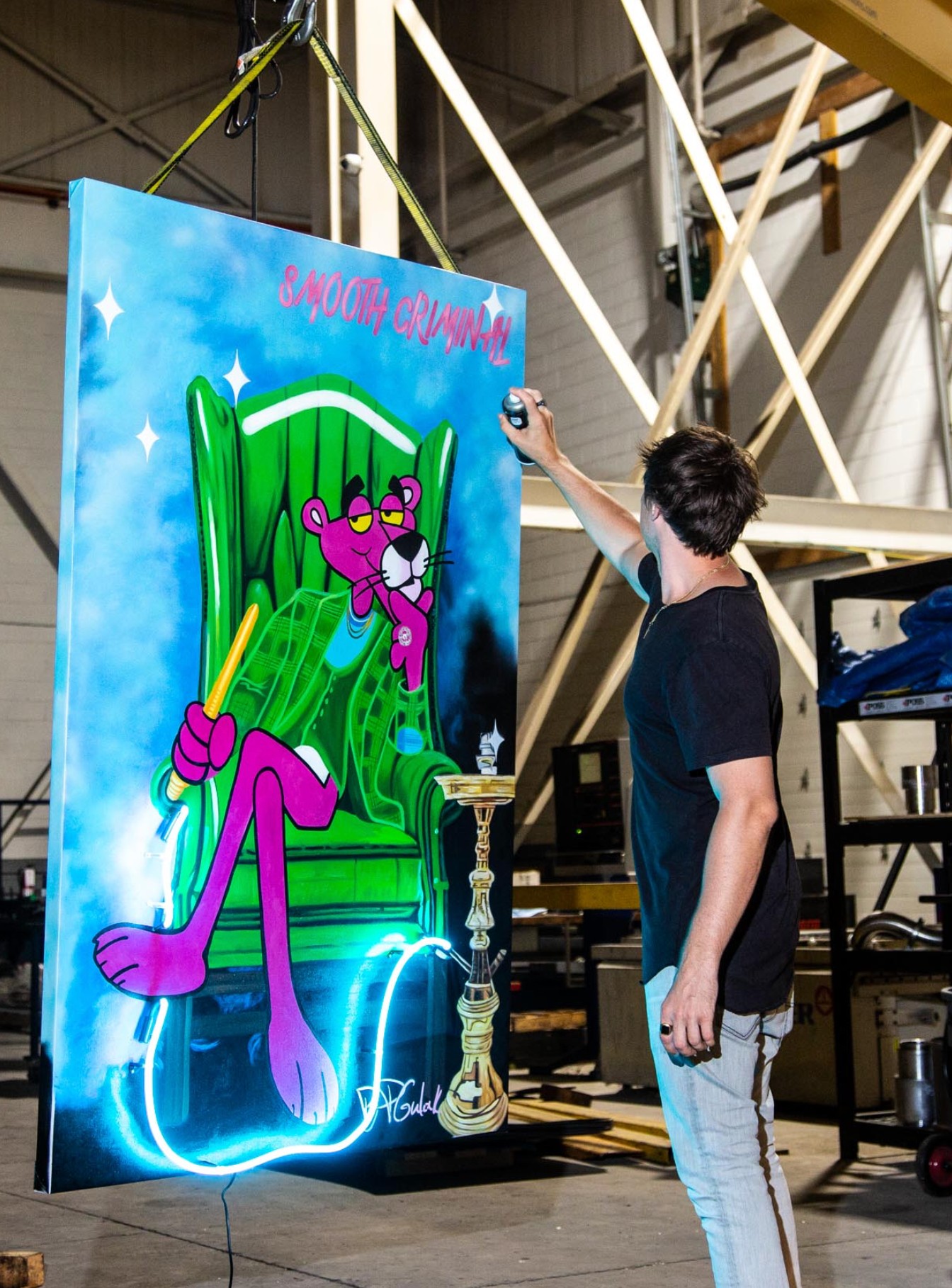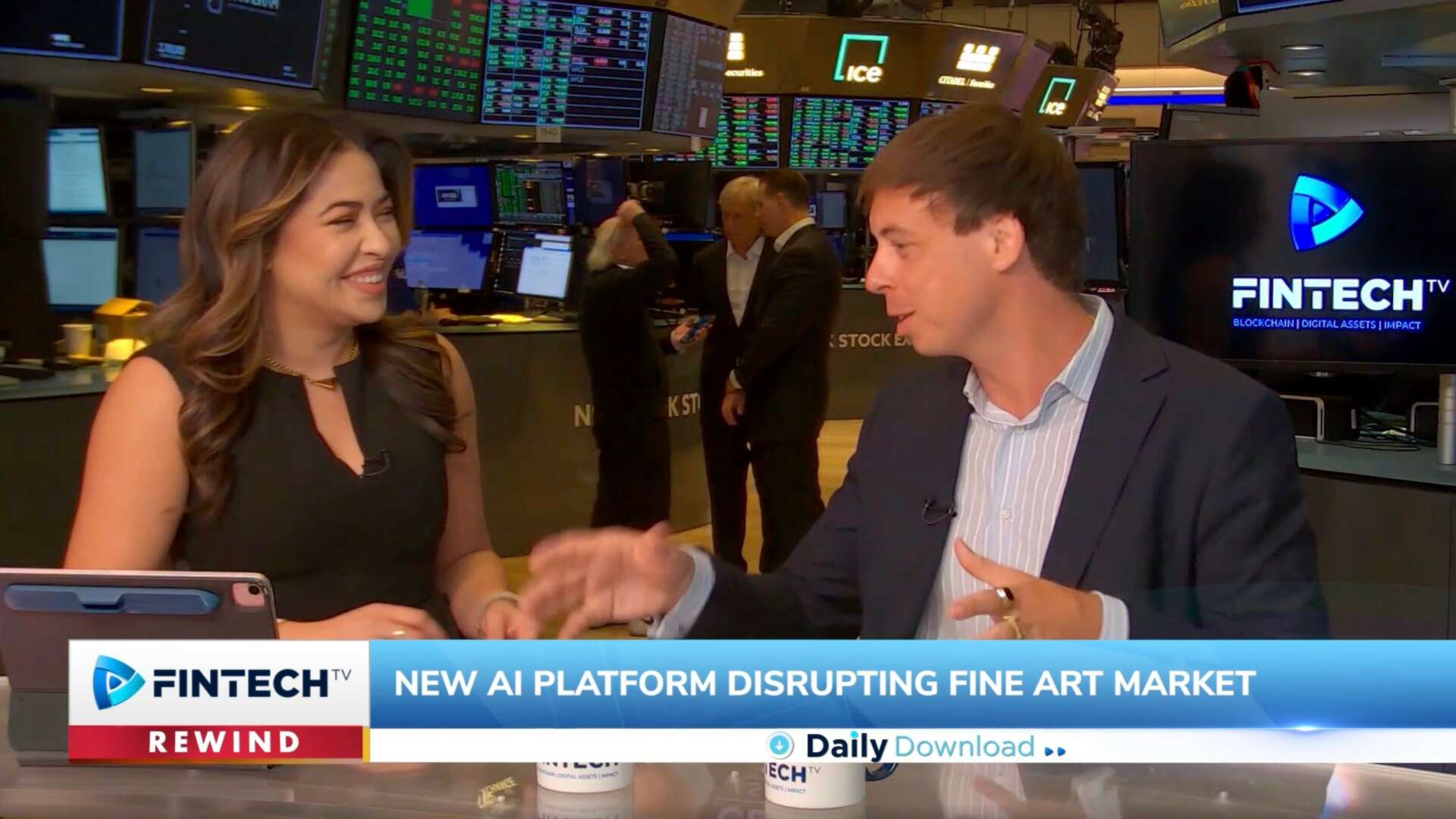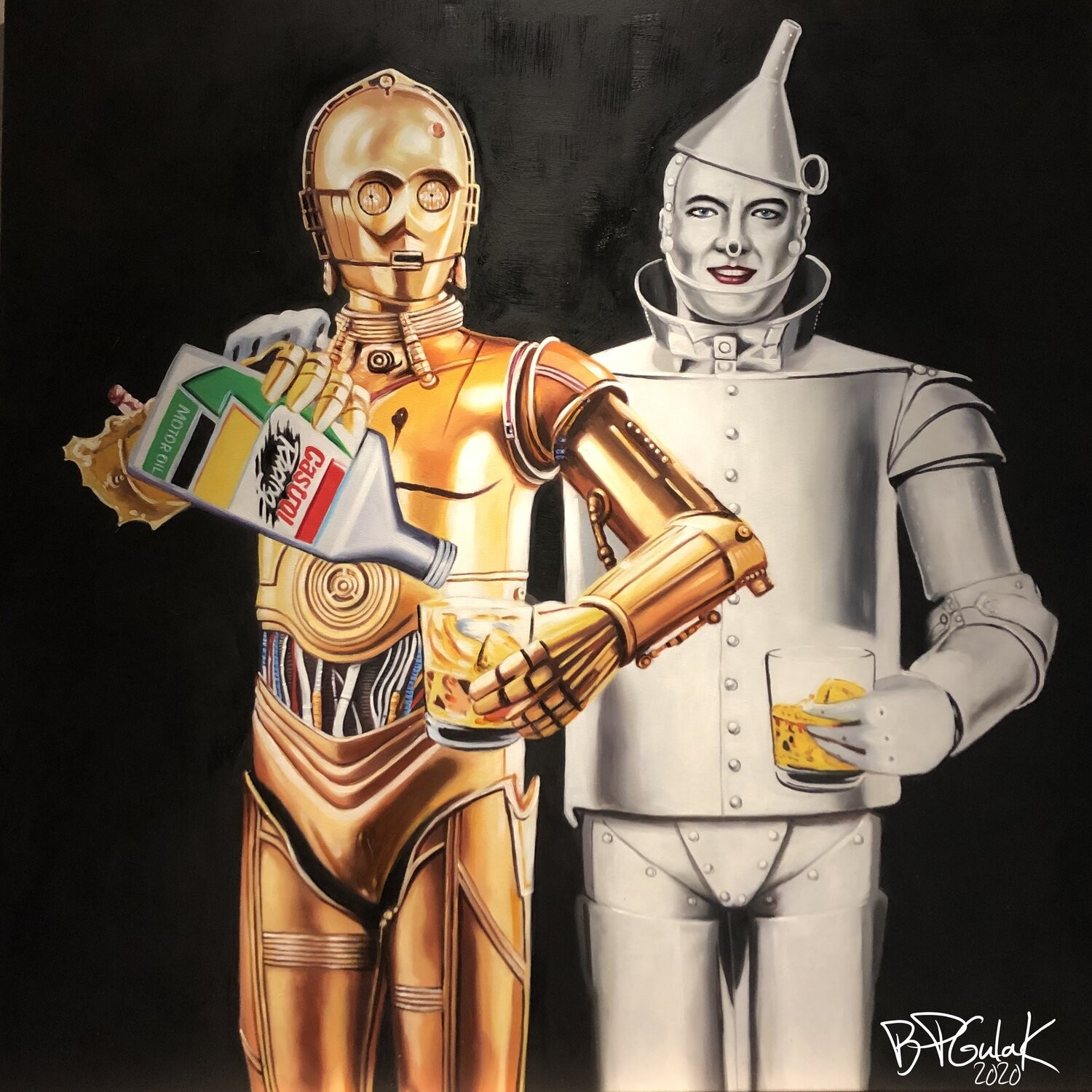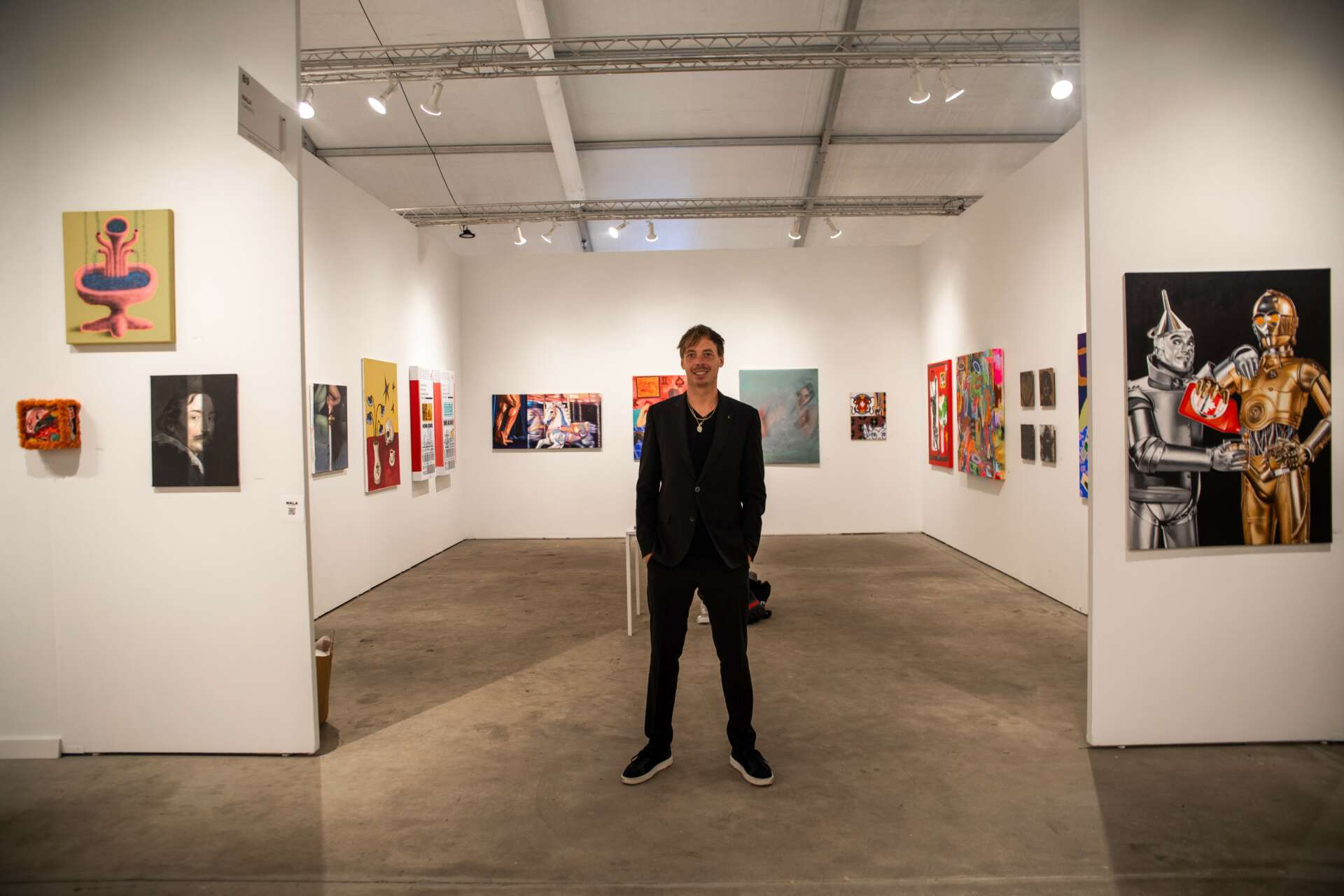We’re excited to introduce you to the always interesting and insightful Benjamin Gulak. We hope you’ll enjoy our conversation with Benjamin below.
Benjamin, appreciate you joining us today. How did you come up with the idea for your business?
During my final year at university, I was studying recommender engines, the kind of algorithms that run Spotify and Netflix and make them so adept at making personalized suggestions to users. After years of being in the art world, I knew that nothing like that existed for fine art. In fact, the industry is intentionally archaic because it allows the taste makers to act as gate keepers keeping almost 98% of artists out of galleries and removed from the high end market. Currently, when searching for new artists, buyers usually turn to online platforms like Artsy or Artsper, where they can search based on price and genre. However, this process can be overwhelming and lacks the personalized touch that recommender engines offer. You’re basically left scrolling through hundreds of pages with thousands of images. There could be a perfect painting for you that’s exactly what you’re looking for but if it’s on page 47 half way down you’ll never see it. And even if you do look through every page, you are still only seeing a tiny sliver of the available art that matches what you’re looking for.
With my experience in the art world and my degree in computer science, I decided to create a platform that connects artists and art lovers in a more intuitive and personalized way. Thus, NALA, the Networked Artistic Learning Algorithm, was born. NALA combines aspects of Dating platforms like Tinder allowing Art Lovers to swipe left and right on artwork they like while integrating a clean and personalized user experience for a brand new interactive way of discovering art.
My journey with NALA was influenced by my desire to break free from the conventional tech career path, my degree more or less leads directly to working for big tech. Starting a tech company in an industry dominated by giants was also a non-starter for me. Fortunately, the Art World is as archaic as you can get. The industry really hasn’t changed much in hundreds of years. Galleries are the gate keepers keeping almost 98% of talent out of the marketplace and social media is a nightmare for artists who have had to become mini movie producers in order to be seen on Instagram with it’s obsession with reels. The Art world is hungry for an artist centric platform that makes their lives easier.
A key turning point was my visit to the Almacenes San Jose Artisan’s Market in Havana, Cuba. This massive warehouse on the wharf housed thousands of works of art from local artists who lacked access to the global market. So, I began placing the work of these artists in galleries I had connections with. Their art started receiving the recognition it deserved, and the prices increased dramatically. This experience validated my belief that there was a need for a platform like NALA, which would serve as a catalyst for a new art exchange.
But, the Almacenes San Jose Artisan’s Market is by no means an outlier, there are thousands of art markets round the world that cater predominantly to tourists. When COVID struck and tourism stopped, these artists had their lives turned upside down. I believe that NALA can bridge this gap, connecting talented artists with a global audience allowing them to sell anywhere in the world.
Our sales pitch to artists is very simple, we can take any artists work and show it to the most likely buyer anywhere on the planet. In essence, NALA is the perfect blend of emerging technologies and emerging markets. It represents the culmination of my life experiences and a vision of what’s possible within the art world. Through NALA, I hope to revolutionize the way artists and art lovers connect on a global scale democratizing the artistic discovery process and hopefully allowing the cream to rise to the top. We have already registered over 6000 artists from over 140 countries with millions of works of art in our database and our platform continues to grow daily. With each new user NALA gets smarter and is able to make better connections.



Awesome – so before we get into the rest of our questions, can you briefly introduce yourself to our readers.
From childhood, my life has been a tapestry of creation and innovation, weaving together art and technology. Playing with Legos and attending art camps laid the foundation for a journey marked by a blend of artistic expression and technical innovation. In high school, this fusion solidified as I delved into art contests, science fairs, and robotic competitions, even spending a semester in Italy studying fine arts. My projects, always married creativity with technology, leading to some notable achievements including my grade 12 Science Fair project being named the Invention of the Year by Popular Science Magazine in 2008. This recognition was a testament to my unique ability to harmonize the artistic with the technical, defining my multifaceted approach to creation.
I ended up pursuing a degree Mechanical Engineering at MIT before starting a business deveopping and manufacturing an innovative tracked vehicle geared at the Extreme Sports market called the DTV Shredder. Our vehicle was a totally new take on blending the freedom of board sports (skateboarding, snowboarding surfing) with the power of motocross and ended up winning an Edison Award for innovative design.
Simultaneously, art always remained a steadfast companion. I started painting again as a means to unwind and express myself and it gradually transformed into a business. I began painting more seriously, eventually turning this hobby/destresser into a real business. I ended up selling My artwork through a network of global galleries and private collections, allowing me to carve out a niche in the art world.
But again, the allure of technology and science beckoned, leading me back to academia. I returned to MIT to pursue a degree in Computer Science and Data Econometrics. AI wasn’t as omnipresent as it is today, but, I knew that the future lay in coputers and algorithms. I went back to school driven by a desire to intertwine my two great loves: art and technology. This period was a deep dive into the analytical and systematic world of computer science, during which I truly didn’t have time to paint any longer but continued selling other artists work through the galleries I had established relationships with.
This amalgamation of art and technology ultimately culminated in the creation of NALA, Networked Artistic Learning Algorithm. It was my answer to the longstanding gap in the art world – a platform that leverages technology to revolutionize how art is discovered and appreciated. NALA is more than just a business; it’s the embodiment of my lifelong journey of straddling the realms of art and science, an endeavor that fuses the intuitive with the analytical.
My path, indeed, has been anything but straight. It has been a journey of embracing the unconventional, seeing what previously didn’t exist and figuring out how to make it a reality. In blending the worlds of art and technology, I have found a way to satisfy both my interests while fully utilizing both parts of my brain. Looking back, it’s hard to say if removing any of the experiences I’ve had would have still led me to creating NALA. It really is the combination/culmination of 3 decades of life experiences.



Can you talk to us about how your funded your business?
To date, NALA has been funded primarily through art sales. During my time at university, I started selling the artwork of talented artists I’d met during my travels. I saw potential in bringing artists from emerging markets without access to the global marketplace and placing them into high profile galleries. I recognized the potential for artists to achieve higher sale prices by connecting them with the right buyers. Initially I did this on a smaller scale working with a handful of artists. But, the business model worked and it inspired me to create NALA, with the goal of bringing artists more to the global market on a much larger scale. Through art sales, as well as my experience in both the tech and the art world, I have been able to self finance NALA through sales from the artists we represent.
During my time at university, I also ventured into online art auctions, I noticed an opportunity to arbitrage works sold at undervalued prices. I wrote a program that collected auction data and searched for artworks selling below what I believed their expected sale price should be, enabling me to purchase and relist them for a profit. At one point, I was buying and selling over 60 works of art per week. This project allowed me to explore the intersection of data science and art while fueling my passion for the art industry. I built NALA for Artists and it’s been funded by Art sales.
We are now at a point where we’re actively raising capital to grow NALA and continue developing our technology.
Can you talk to us about how your side-hustle turned into something more.
I’ve always loved art. I grew up going to art camps and taking art throughout high school, and even took a study abroad fine arts program where I did painting in Italy for a Semester. Then my life took a different turn and I went University to study Mechanical Engineering at MIT, dropping out and starting an engineering and manufacturing business developing off-road vehicles. But art always remained part of my life.
I eventually started painting again to help de-stress. But, I knew that if I was going to paint, even if only for fun, I didn’t want to have my artwork collecting dust in the basement. I wanted to see if I could sell it.
Around this time, I was down in Miami for New Years. I was walking around looking at galleries and ended up showing my work to a one of the owners who was generous to give me a shot at having my work displayed. This set a precedent for my work being displayed along side some high profile artists and From there, I was able to work my way into several other galleries. At one point I was selling my work through over 15 galleries including Graffik Gallery in London, Samhart in Switzerland and S’ist Art in Venice. As the prices went up, my life-long passion for art became revitalized as a career.
Over the next five years, I spent my time painting and selling my work. I attended Miami art week 3 times selling work at Scope Miami and Aqua Arts in addition to attending World Art Dubai and being invited to participate at YoHo Shanghai 2017 and 2018.
When I went back to MIT to study Computer Science and Data Econometrics, I didn’t have time to paint any more. I’d been out of academia for almost 12 years and was barely able to get through my classes. To help make ends meet while I was in school and hoping to foster opportunities for the next generation of artists, I founded a small agency and used relationships I’d built with galleries selling my work to place artists from emerging markets into high profile galleries. The result was bringing fresh new talent to the global market. We were quite successful and even started an Artists Residency program in Dubai where some of our artists would stay for months at a time creating large format paintings for hotels.
Towards the end of my degree, I struggled to imagine the next steps after graduation. The career path that most computer science majors take leads directly to working for big tech or continuing in research. I wanted to find a way to blend what I was studying with art to help more artists the way I was doing with the agency.
Part way through my final year of classes, I had my eureka moment and saw a way to combine my passion for art with computer science. I knew that artificial intelligence had massive unrealized potential in the art industry, an industry that by its very nature is quite archaic and relatively untouched by technology (aside from the recent explosion of NFTs). By the time I graduated, I was committed to making the art industry my full-time focus, to apply my new skillset towards something that had never been done before. 3 years later, we have launched our platform, are signing up artists and growing daily. We recently attended Miami Art Week and had our own booth at Context Miami where we displayed a roster of awesome artists who are all part of NALA. Our next push is bringing artists from our platform into real world art spaces not just being an online platform.
Contact Info:
- Website: www.NALA.art
- Instagram: N.A.L.A.art
- Linkedin: https://www.linkedin.com/company/nala-fze
Image Credits
Ben Gulak


